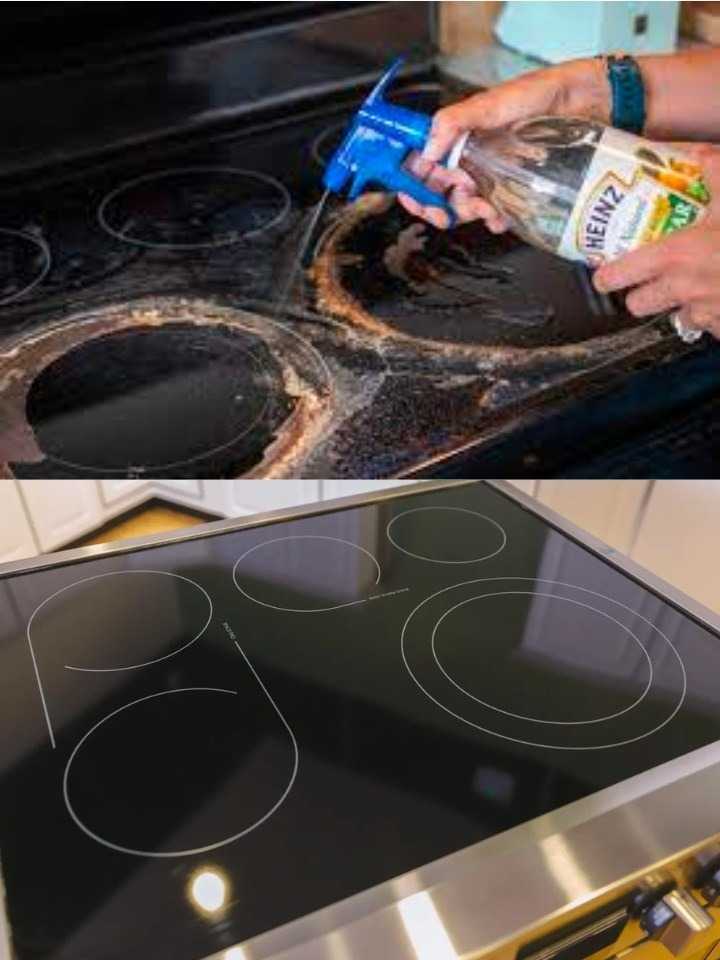ADVERTISEMENT
3. Use a Razor Blade for Stubborn Burnt-On Food
Sometimes, food can become so baked onto the surface of your glass stovetop that it requires a more intense cleaning method. A razor blade or scraper is a great tool for safely removing burnt-on food without scratching the glass.
How to use it:
- Make sure the stovetop is completely cool before starting.
- Hold a razor blade at a 45-degree angle to the glass surface.
- Gently scrape away the burnt food or residue, using light pressure to avoid damaging the glass.
- Wipe away the loosened debris with a damp cloth.
- For stubborn spots, apply a bit of vinegar or cleaner, and scrub gently with a soft sponge.
- Finish by wiping the area dry.
Why it works: A razor blade is effective for removing tough, baked-on food that other cleaning methods might not be able to tackle. Just be sure to use the blade carefully to avoid scratching the surface.
4. Lemon for Freshness and Shine
Lemon is another natural ingredient that can work wonders on a glass stovetop. Not only does it help remove grease and stains, but it also leaves behind a fresh, pleasant scent. The acidity in lemon can break down grease, and its natural oils contribute to a streak-free shine.
How to use it:
- Cut a lemon in half.
- Rub the cut side of the lemon directly onto the glass surface, squeezing gently to release the juice.
- Let the juice sit for a few minutes to dissolve any grease or stains.
- Use a soft cloth or sponge to wipe the area clean.
- For added shine, buff the surface with a dry microfiber cloth.
Why it works: Lemon’s natural acidity and fresh scent make it an excellent choice for cleaning and deodorizing your stovetop while leaving it gleaming.
5. Commercial Glass Cleaner for a Quick Polish
For a quick and easy clean, commercial glass cleaners are a convenient option. While they may not tackle heavy stains or grease, they are great for giving your glass stovetop a final polish after you’ve done a more intensive cleaning.
How to use it:
- After cleaning your stovetop with one of the other methods, spray a small amount of glass cleaner onto the surface.
- Use a microfiber cloth to wipe the surface in circular motions, buffing out any streaks and leaving a shiny finish.
Why it works: Commercial glass cleaners are designed to leave glass surfaces streak-free and polished, providing an instant shine after you’ve done the heavy cleaning.
Bonus Tips for Preventing Future Stains:
- Clean spills immediately: Wipe up spills as soon as they happen to prevent them from cooking onto the glass. This is especially important for sugary or acidic foods that can create tough stains.
- Use cookware with flat bottoms: Pots and pans with flat, smooth bottoms make better contact with the stovetop and are less likely to cause burns or food buildup.
- Avoid abrasive sponges: Using harsh scrubbing tools, like steel wool or rough sponges, can scratch the glass surface. Always use a soft cloth, sponge, or microfiber towel for cleaning.
- Use stovetop covers or trivets: When cooking, consider using stovetop covers or trivets to catch any mess before it can make contact with the glass.
Conclusion
Cleaning your glass stovetop doesn’t have to be a complicated or time-consuming task. By using one or a combination of these 5 effective methods, you can keep your stovetop looking spotless and shining without damaging the delicate glass surface. Whether you’re using a specialized cleaner, a natural solution like baking soda and vinegar, or a razor blade for stubborn food, these techniques will ensure your glass stovetop remains a sleek and functional part of your kitchen.
So, the next time your stovetop is looking a little less than pristine, try one of these methods and enjoy a clean, sparkling kitchen surface once again!
ADVERTISEMENT
ADVERTISEMENT
